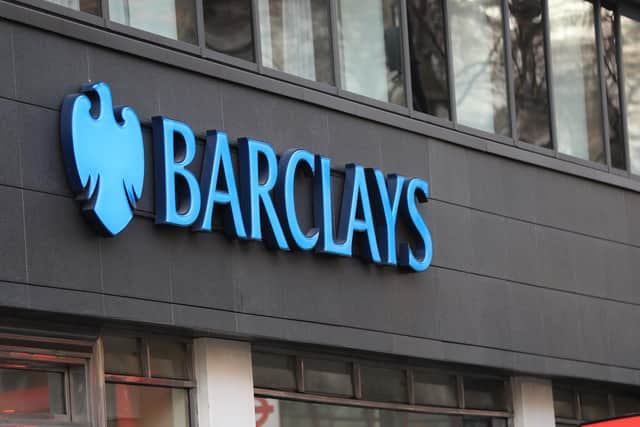Banking giant Barclays beats profit forecasts but cover for bad loans rises
The banking giant said it made a pre-tax profit of £1.9bn in the three months to September, coming in slightly ahead of analysts’ expectations but below last year’s £2bn profit.
Higher interest rates and weaker house prices prompted the bank to increase its credit impairment charges to £433m for the period, up from £381m last year.
Advertisement
Hide AdAdvertisement
Hide AdThe increase came despite the proportion of people falling behind on loan repayments remaining low, it said.


Barclays revealed that income from its corporate and investment banking division fell by 6 per cent year on year as volatility in the financial markets led to lower customer activity.
Income across the bank was down by 2 per cent, which it said partially reflected the merger of two divisions, offsetting higher borrowing costs boosting income in the UK.
CS Venkatakrishnan, Barclays’ group chief executive, said the bank was managing credit well and remaining “disciplined” on costs.
Advertisement
Hide AdAdvertisement
Hide Ad“We see further opportunities to enhance returns for shareholders through cost efficiencies and disciplined capital allocation across the group,” he said.
He added that it is set to provide revised financial targets within its full-year financial results.
Richard Hunter, Head of Markets at interactive investor, commented: “Barclays is known for its strength in depth, with the diversity of its business model allowing the bank to pull different levers as the economic backdrop changes.
“The Corporate and Investment Bank (CIB), which accounts for around half of total group revenue, saw a dip of 6 per cent in income to £3.1bn, in line with expectations.
Advertisement
Hide AdAdvertisement
Hide Ad"Lower client activity and investment fees, the latter of which reflects a reduced fee banking pool as experienced by some of the bank’s US counterparts, dragged on numbers although CIB managed a Return on Tangible Equity (ROTE) of 11.5 per cent.”
Mr Hunter added: “On the other hand, the Consumer, Cards and Payments (CC&P) unit posted income growth of 9 per cent, driven largely by higher balances on US credit cards.
"However, this rise in effectively unsecured lending has inevitably led to a small and containable increase in credit defaults, of which the bank is acutely aware. It has therefore taken the decision to increase the overall level of the impairment charge to £1.3bn for the year, which is an additional £400m provision from the level posted at the half-year results.”
The strength of the US dollar versus sterling has worked for and against the bank, said Mr Hunter.
Advertisement
Hide AdAdvertisement
Hide AdHe added: “On the one hand, it has had a beneficial impact when translating income and profit back to sterling, but it also works against the group in terms of operating expenses and impairment charges.”
"As ever, Barclays is spinning many plates and largely reaping the reward of its geographical and business diversity. The generally dour economic backdrop has dragged on the shares, which declined by 1 per cent over the last year even prior to today’s weak opening, as compared to a gain of 5 per cent for the wider FTSE100.”